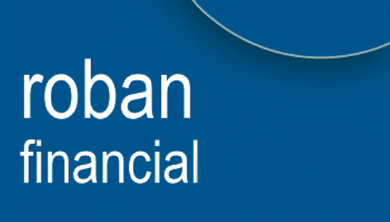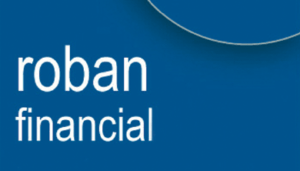When you retire, your earnings could be a lot less than you are used to. If you had to live on a State pension only, you would probably have to take a big drop in your income. For example, the State contributory pension is currently €223.30 a week, or €442.30 a week if you financially support another adult. Nobody wants to see their income fall too low when they retire. That’s why you need to plan for your retirement.
 You can do this in a number of ways. For example:
You can do this in a number of ways. For example:
- save money in a savings account;
- buy stocks and shares;
- invest in property at home or abroad; or
- save through a pension plan.
Please see our Frequently Asked Questions below for an easy to understand guide on pensions.
What happens to my pension contributions?
The pension fund manager invests your contributions (and any made by your employer) in one or more pension funds. These funds are used to buy and sell assets, such as shares, property, bonds and cash (deposits). There are many types of pension fund. Each invests in a different mix of these assets
The value of the fund rises and falls depending on the performance of shares, property and other assets in the fund. The fund is expected to grow by a certain amount each year, but this is not guaranteed and fund values go up and down over the years. Think of your pension as a long-term plan that you need to keep for 20 to 30 years. This gives enough time for your fund to recover growth after any short term falls in value. Generally, the longer you keep your contributions invested, the more likely your fund will grow in value.
When should I start saving for my retirement?
The earlier you start the better. You will have more time to make contributions and more time for your fund to grow in value. If you don’t start a pension until your 40s, you will have less time to build up your fund. So, you will have to pay much higher monthly contributions to give you the same pension you would have had if you started saving in your 20s or 30s. If you are older when starting a pension, don’t let this put you off, as it is better to have a smaller fund than no fund at all! Remember, as you get older you can get tax relief on more of your income.
What type of pension plan should I chose?
There are four main types of pension plan.
- Employer pension plans
- Personal Pension Plans
- Personal Retirement Savings Accounts (PRSAs)
- Small Self Administered Pension (SSAP)
An Employer Pension Plan:
An employer pension plan (or occupational pension plan) is one that is set up by an employer to provide pension and other benefits for employees. The main advantage of this type of plan is that your employer must make a contribution to it, even though the amount may be small.
Your employer usually sets up the rules of the pension plan, and appoints people called trustees to look after it. Your employer automatically takes your contributions from your salary before working out income tax. So, you get tax relief automatically because you don’t pay tax on your pension contribution.
Personal Pension Plan:
These are private pension policies managed by life assurance companies and investment firms. You have to be earning an income or be self-employed to hold one of these plans
Personal Retirement Savings Accounts (PRSA):
This is a special type of personal pension policy that is designed to be more flexible than the traditional Personal Pension Plan. Anyone up to age 75 can take out a PRSA. You don’t have to be earning an income, (although you won’t get tax relief on your contributions unless you have an income).
Small Self Administered Pension (SSAP):
A SSAP is established under trust by a company’s directors. The director is the ‘member’ and ‘Trustee’ of the pension scheme. A SSAP provides a tax-efficient environment in which a company’s funds can be invested to provide retirement benefits for directors. As the fund grows it is ringfenced for the member and is free from creditors should the company go into liquidation.
A SSAP gives company directors the opportunity to maximise their pension funds prior to retirement by giving them control over their investments. Unlike other pension schemes the directors can control and choose their investments. The range of investment options are extensive and include: property, structured deposits, direct investment in stocks and shares etc. Since the introduction of the Finance Act 2004 the Trustees of single member SSAPs can also borrow money in order to invest for the benefit of the scheme. Please note there are certain rules with regard to borrowing within an SSAP.
What happens if I become ill and cannot continue to work?
Some employers provide an ill-health pension for their employees if they have to retire early because of ill-health. If your employer does not provide these benefits, consider taking out some form of salary protection insurance, such as permanent health insurance (PHI). This type of policy is not the same as a pension but it can replace part of your income for as long as you are unable to work due to ill-health.
What happens if I die before I retire?
The value of your Personal Pension or PRSA passes to your estate for the benefit of your dependants if you die before you retire. You need to consider the value of your pension plan when deciding how much life insurance cover you need, or when you make a will.
How could a pension plan benefit me?
A pension plan is basically a long-term savings plan, where you save regular amounts or lump sums (called ‘contributions’) to build up a retirement fund. Next to buying your home, it is probably the most important investment you will make in your lifetime. For every €100 of your income you invest in a pension plan, the real cost to you (after tax relief) is actually less. It costs you €80 if you pay tax at 20%, or €59 if you pay tax at the top rate of 41%.
If you are an employee, your cost will be even lower than this as you can also get some relief on PRSI and health levy payments. If you have an employer pension plan, you don’t have to pay tax on any contributions your employer makes. The maximum earnings you can take into account for pension tax relief is currently €254,000 per year.
Tax-free investment growth
You don’t have to pay tax on the growth of your pension fund. With most other investment plans you have to pay a tax of 23% of any growth you earn. So, your pension fund can grow in value more quickly than a standard investment plan.
Tax-free cash when you retire
When you retire, you can take part of your pension fund as a tax-free lump sum. The amount you can take depends on the type of pension plan you have.

